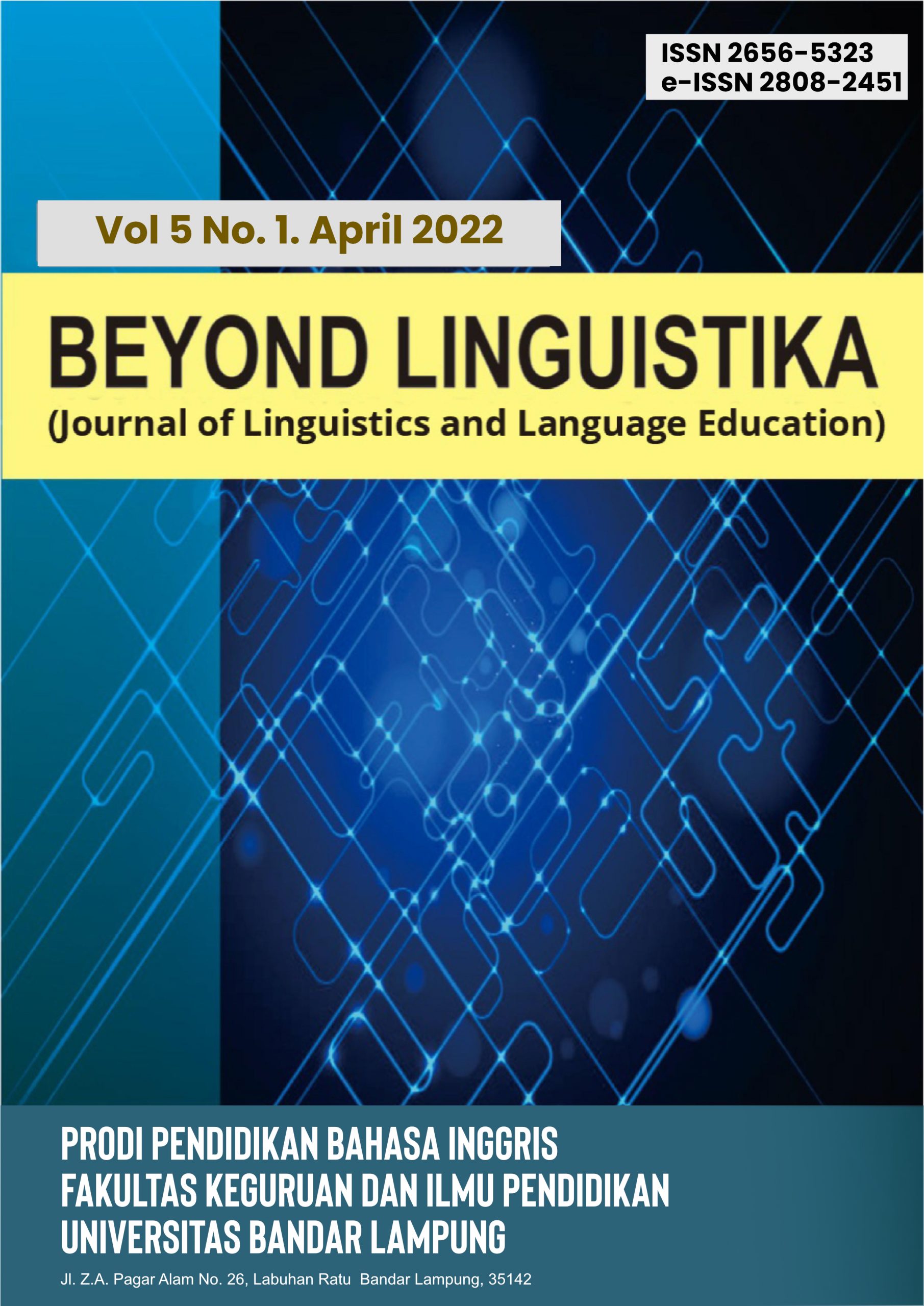THE EFFECT OF USING WEB TOON STORY AS TEACHING MATERIAL TOWARDS THE STUDENTS’ WRITING ABILITY
Abstract
This paper reports a study on the effect of using web toon story towards students’ ability. The study was conducted at the second grade of SMK N 1 Gunung Pelindung, Lampung Timur. It used random sampling technique to select the sample. Pre-test and post-test were used as the research instrument to collect the data. In the quantitative method, the students as the subjects of participants were divided into two groups: experimental group (N=30) and control group (N=30). The data was analyzed by using t-test analysis showing that the experimental and control group mean scores in the pre-test were not significantly different. It can be seen that t-count was lower than t-table (0.229 < 2.002) and the sig.2-tailed value is higher than sig. level (0.820 > 0.05). Therefore, both experimental and control groups have the same level of writing ability before treatment. However, in the post-test, the mean score of experimental group is higher than control group. T-count is higher than t-table (10.706 > 2.002) with the sig.2-tailed value is lower than sig. level (0.000 < 0.005). Therefore, the null hypothesis (Ho) was rejected and the alternative (Ha) was accepted. It means that there was the effect of using web toon story as teaching material towards the students’ writing ability.
Keywords
Full Text:
PDFReferences
Blanchard, K., & Root, C. (2003).
Ready to Write. England: Longman.
Brown, H. D. 2007. Teaching by Principles: An Interactive Approach to Language Pedagogy. England: Longman.
Gusria. (1996). Improving English Skill: How to Develop Good Writing Skill in English. England: Cambridge University Press.
Harmer, J. (2001). How to Teach Writing. England: Longman.
Harmer, J. (2004). The Practice of English Language Teaching.
England: Longman.
Jackson, T. (Ed.). (1993). Learning through theatre: New perspectives on theatre in education. London: Routledge.
Jenks, E. B. (2005). Parents’ stories of raising children with visual impairments in a sighted world. Journal of Contemporary Ethnography, 34, 143–169.
Muijs, D. (2011). Doing Quantitative Research in Education with SPSS. London: SAGE Publication.
Nanda, D. S. (2016, May). Fostering the Use of Drama for English Language Learners in the Efl Classroom. In International Conference on Education and Language (ICEL) (p. 7).
Nanda, D. S., & Susanto, S. (2020, January 21). The emergence of cyber literature: a challenge to teach literature from text to hypertext. https://doi.org/10.35542/osf.io/q8psj.
Podlozny, A. (2000). Strengthening verbal skills through the use of classroom drama: A clear link.
Journal of Aesthetic Education, 34, 239–275.
Raimes, A. 1983. Techniques in Teaching Writing. Oxford: Oxford University Press.
Sahbaz, N. K., & Duren, G. (2011). The Efficiency of Cluster Method in Improving the Creative Writing Skill of 6th Grade Students of Primary School from Department of Turkish Teaching. Educational Research and Reviews Vol. 6(11), pp. 702- 709.
Susanto, S., & Nanda, D. S. (2018). Teaching and learning English for visually impaired students: an ethnographic case study. English Review: Journal of English Education, 7(1), 83-92.
Weigle, S. (2002). Assessing Writing. Cambridge: Cambridge University Press.
Wright, A. 1989. Pictures for Language Learning. Cambridge: Cambridge University Press.
DOI: http://dx.doi.org/10.36448/bl.v1i2.1783
Refbacks
- There are currently no refbacks.















